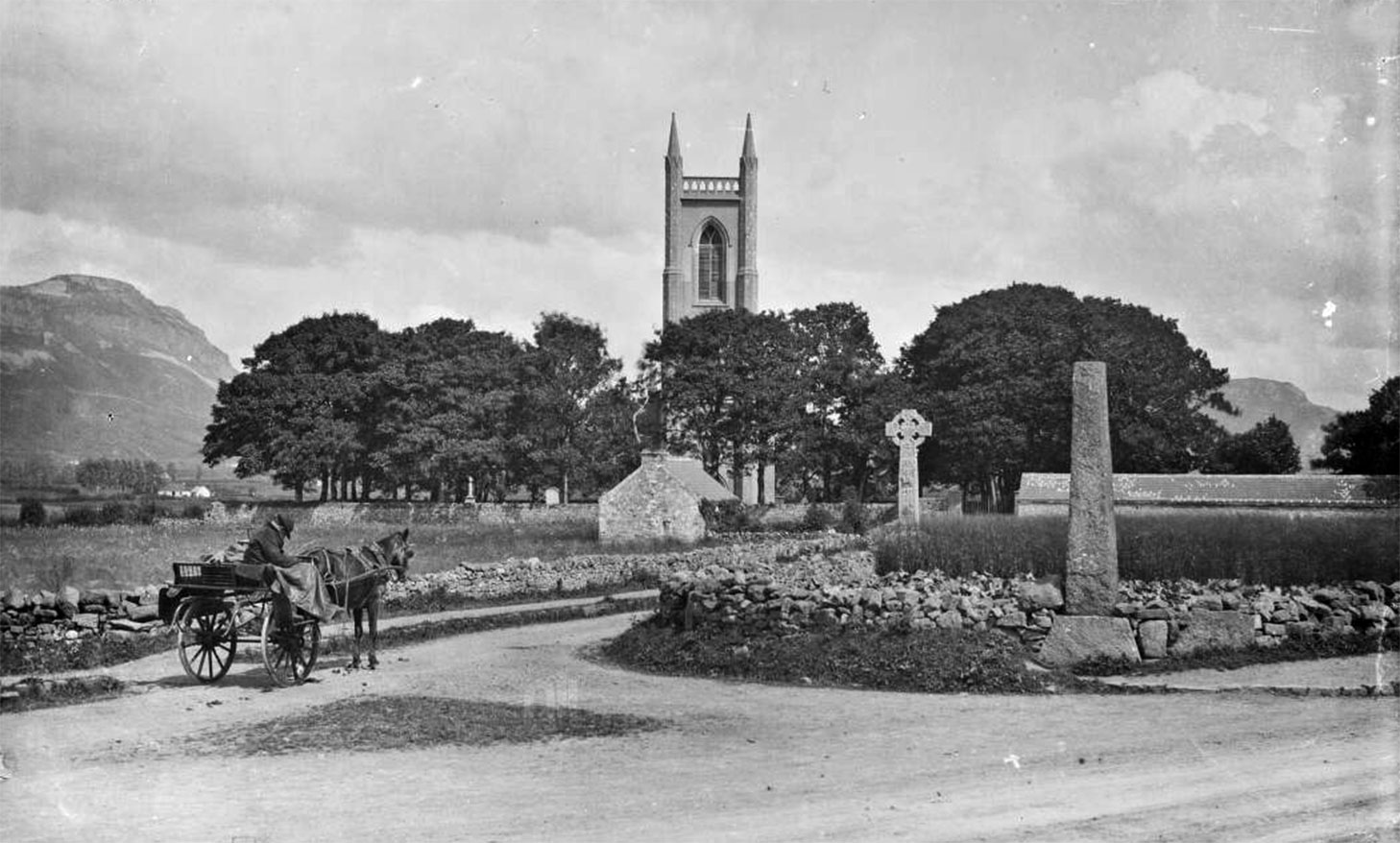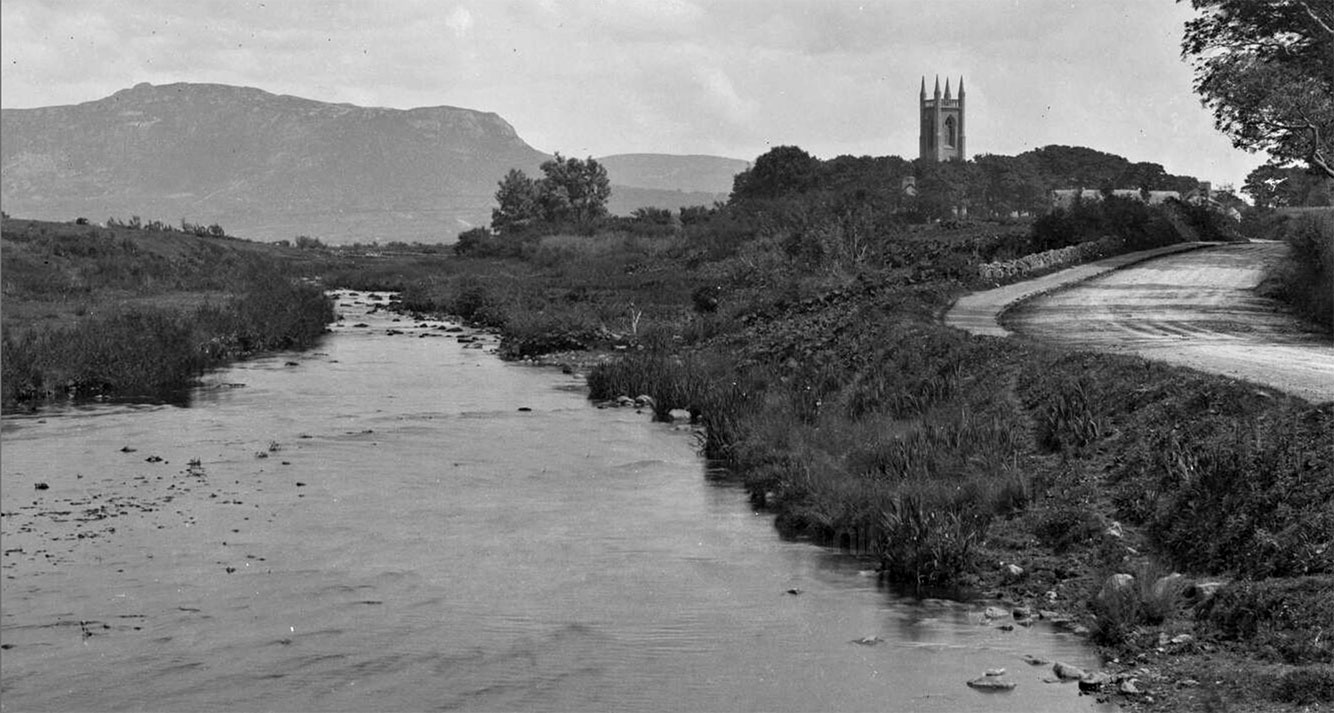William Butler Yeats
The poet William Butler Yeats was born in Dublin on June 13th, 1865. He was the oldest child of John Butler Yeats, a lawyer who became a painter, and Susan Pollexfen, a native of County Sligo.
Then both Yeats and the ailing Maud had to be off to London and thence to Dublin to help finalize the arrangements for the '98 centennial celebrations. They planned on arrival to go to the prehistoric site of Newgrange to collect sacred earth with which to evoke the forms of gods and spirits of Ireland, but at the last moment Maude found she had too many commitments and as on numerous other occasions stood Yeats up. Then at a demonstration Maude was thrown from a horse-drawn wagon on which she was to address the crowd. Her arm was broken and her face bruised and scratched. Yeats, who had made arrangements to go on to Coole, remained with her, fussing and worrying a great deal....
Yeats's passion for the cause was also stimulated by two gifts from Maude Gonne. She had finally gone to Newgrange without him, and now sent him some earth from the ancient site and water from the River Boyne flowing nearby, urging him to try some experiments with them. She thought that if he touched his lips, ears and eyes and breast with them, they would bring him special dreams.
In June of that year, 1902, Yeats's patriotic feelings found another outlet. News came that an Englishman, a mamber of a sect known as the British Israelites who believed the English to be the lost tribe of Israel, was employing labourers to excavate the Hill of Tara, the site of Ireland's ancient capital, in hopes of finding the Ark of the Covenant there.
With Douglas Hyde and George Moore, an outraged Yeats travelled to Tara, a remote country place some fifty miles north-west of Dublin, and was horrified to see the extent of the digging. The crude, amateur archaeologists had destroyed the contour of the sacred Hill. The three visitors immediately wrote a letter of protest to The Times and ten days after it appeared they returned to Tara. They found the Irish owner of the site sitting on the hillside with a gun, a bottle of whiskey and a number of ferocious-looking dogs. But the three men of letters were not to be intimidated. Yeats especially was in one of his fighting moods. Ignoring the loud, bullying menaces of the drunken landlord the three forced their way onto the property. Douglas Hyde threatened that a mass protest meeting would be held on the site, organized by the Gaelic League. After much altercation and argument it was agreed that the English tenant should suspend the diggings at Tara, and finally they were abandone altogether.
Yeats - the Man and the Millieu by Keith Alldritt.
Under Ben Bulben
BY WILLIAM BUTLER YEATS
I
Swear by what the Sages spoke
Round the Mareotic Lake
That the Witch of Atlas knew,
Spoke and set the cocks a-crow.
Swear by those horsemen, by those women,
Complexion and form prove superhuman,
That pale, long visaged company
That airs an immortality
Completeness of their passions won;
Now they ride the wintry dawn
Where Ben Bulben sets the scene.
Here's the gist of what they mean.
II
Many times man lives and dies
Between his two eternities,
That of race and that of soul,
And ancient Ireland knew it all.
Whether man dies in his bed
Or the rifle knocks him dead,
A brief parting from those dear
Is the worst man has to fear.
Though grave-diggers' toil is long,
Sharp their spades, their muscle strong,
They but thrust their buried men
Back in the human mind again.
III
You that Mitchel's prayer have heard
`Send war in our time, O Lord!'
Know that when all words are said
And a man is fighting mad,
Something drops from eyes long blind
He completes his partial mind,
For an instant stands at ease,
Laughs aloud, his heart at peace,
Even the wisest man grows tense
With some sort of violence
Before he can accomplish fate
Know his work or choose his mate.
IV
Poet and sculptor do the work
Nor let the modish painter shirk
What his great forefathers did,
Bring the soul of man to God,
Make him fill the cradles right.
Measurement began our might:
Forms a stark Egyptian thought,
Forms that gentler Phidias wrought.
Michael Angelo left a proof
On the Sistine Chapel roof,
Where but half-awakened Adam
Can disturb globe-trotting Madam
Till her bowels are in heat,
Proof that there's a purpose set
Before the secret working mind:
Profane perfection of mankind.
Quattrocento put in paint,
On backgrounds for a God or Saint,
Gardens where a soul's at ease;
Where everything that meets the eye
Flowers and grass and cloudless sky
Resemble forms that are, or seem
When sleepers wake and yet still dream,
And when it's vanished still declare,
With only bed and bedstead there,
That Heavens had opened.
Gyres run on;
When that greater dream had gone
Calvert and Wilson, Blake and Claude
Prepared a rest for the people of God,
Palmer's phrase, but after that
Confusion fell upon our thought.
V
Irish poets learn your trade
Sing whatever is well made,
Scorn the sort now growing up
All out of shape from toe to top,
Their unremembering hearts and heads
Base-born products of base beds.
Sing the peasantry, and then
Hard-riding country gentlemen,
The holiness of monks, and after
Porter-drinkers' randy laughter;
Sing the lords and ladies gay
That were beaten into the clay
Through seven heroic centuries;
Cast your mind on other days
That we in coming days may be
Still the indomitable Irishry.
VI
Under bare Ben Bulben's head
In Drumcliff churchyard Yeats is laid,
An ancestor was rector there
Long years ago; a church stands near,
By the road an ancient Cross.
No marble, no conventional phrase,
On limestone quarried near the spot
By his command these words are cut:
Cast a cold eye
On life, on death.
Horseman, pass by!


